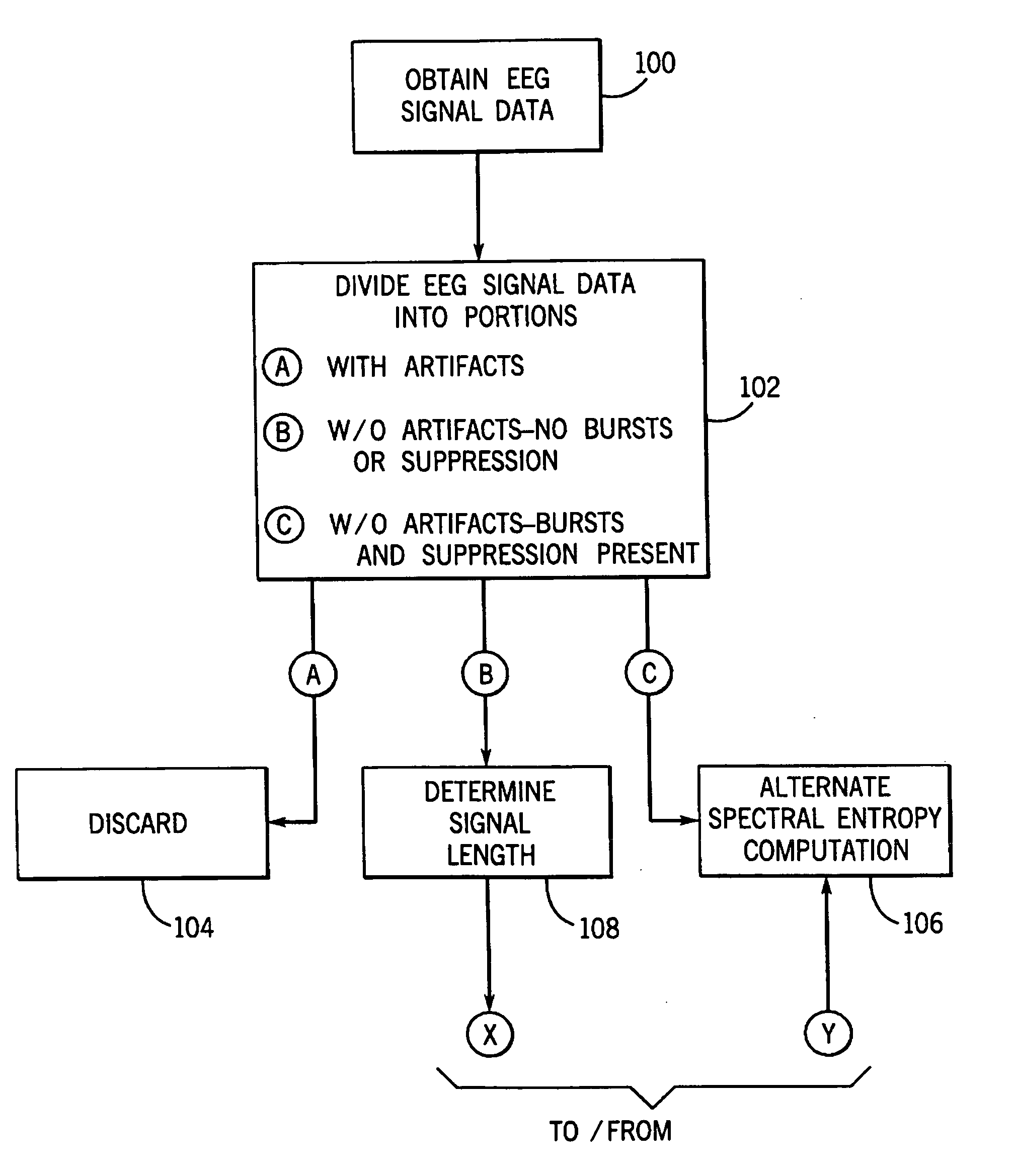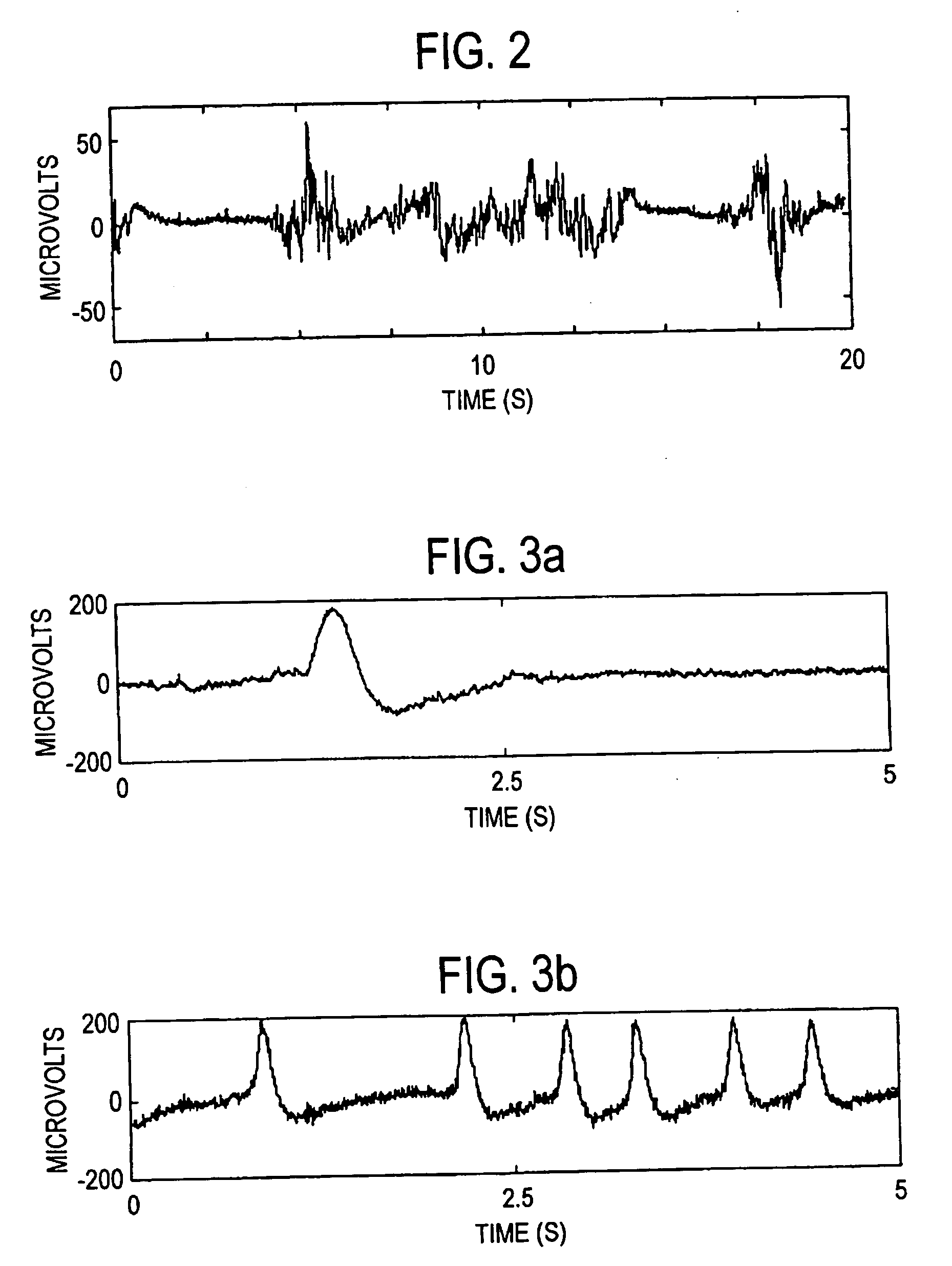Method and apparatus for determining the cerebral state of a patient using generalized spectral entropy of the EEG signal
a generalized spectral entropy and eeg signal technology, applied in the field of methods and apparatus for determining the cerebral state of a patient using generalized spectral entropy of eeg signal, can solve the problems of inability to fully correlate the changes in the hypnotic state of the patient, the gross characterization is too imprecise and unreliable to use, and the measurement is difficult, so as to improve the efficiency of data collection and enhance the utility degree degree degree
- Summary
- Abstract
- Description
- Claims
- Application Information
AI Technical Summary
Benefits of technology
Problems solved by technology
Method used
Image
Examples
Embodiment Construction
Computation of Spectral Entropy
[0057] The computation of the spectral entropy of a signal in the conventional manner according to Rezek and Roberts for stationary EEG signal data and constant epoch length includes the following steps.
[0058] The EEG signal is obtained from electrodes applied to the head of a patient sampled at a sampling frequency, and subjected to analog-to-digital signal conversion. The sampling frequency F is selected in accordance with the highest frequency to be evaluated and is typically around 100 Hz, Rezek et al. describing 128 Hz. The signal is low pass filtered to select the desired portion of the signal and to remove noise. Rezek et al. describe a cutoff frequency of 25 Hz as it is generally assumed that most measurable power of the EEG activity is confined to the frequency band below approximately 32 Hz. To use the Rezek and Roberts computation in the conventional manner, the filtered EEG signal is then divided into epochs of constant length. As noted a...
PUM
 Login to View More
Login to View More Abstract
Description
Claims
Application Information
 Login to View More
Login to View More - R&D
- Intellectual Property
- Life Sciences
- Materials
- Tech Scout
- Unparalleled Data Quality
- Higher Quality Content
- 60% Fewer Hallucinations
Browse by: Latest US Patents, China's latest patents, Technical Efficacy Thesaurus, Application Domain, Technology Topic, Popular Technical Reports.
© 2025 PatSnap. All rights reserved.Legal|Privacy policy|Modern Slavery Act Transparency Statement|Sitemap|About US| Contact US: help@patsnap.com



